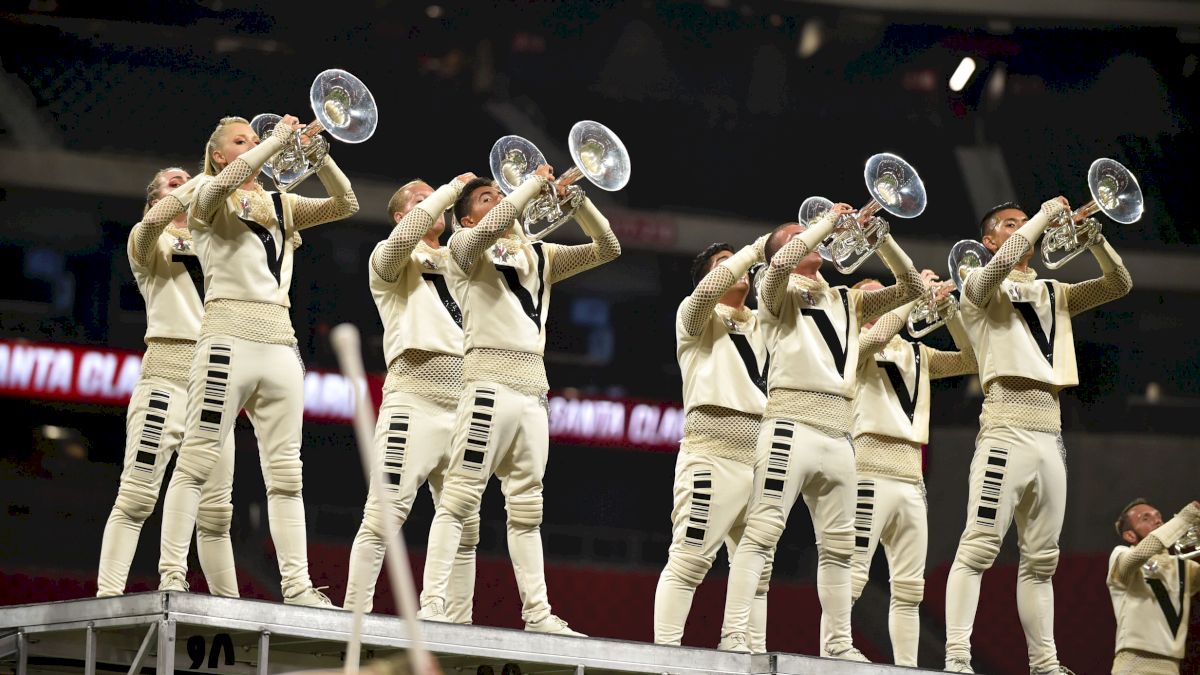Bent Leg Vs. Straight Leg: A Series By Dan Schack, Part 3
Bent Leg Vs. Straight Leg: A Series By Dan Schack, Part 3
Dan Schack uses his experience in the marching arts to take an analytical look at the pros and cons of straight leg vs bent leg marching techniques.

Unlock this article, live events, and more with a subscription!
Already a subscriber? Log In
Dan Schack is the Battery Coordinator/Choreographer of Carolina Crown Drum and Bugle Corps and the Creative Director of George Mason University Indoor Drumline. Outside of his musical endeavors, Dan is pursuing a Ph.D. in English at the University of Delaware.
In this series of articles, I will attempt to negotiate and demystify some of the similarities and differences between the straight and bent leg marching styles. I will also provide some of my ideas as to which style is easier to perform, teach, and implement, and why one style may be preferable over the other.
It is my hope that these pieces can generate useful discussion as to which style is best suited for any one individual program, as I weigh the costs and benefits of each. Furthermore, I hope to enlighten readers to the potential of teaching a more hybrid, flexible approach that does not have to rely on one essential concept, but instead may borrow from either end of the visual technique spectrum.
This, I think, is the key to being a progressive and relevant visual mind.
Full Bent Leg Vs. Straight Leg Series by Dan Schack:
Part 1 - Introduction & Geographical Significance
Part 2 - Aesthetic & Articulation
Part 3 - Pitfalls/Accessibility/Training & Top-Down Perspective & Conclusion
Pitfalls/Accessibility/Training
So, the technique is actually geared towards our instinctive movement mechanics. This means that starting a young student with bent leg could actually be highly beneficial because you won’t have to reverse any prior straight leg conditioning and the fundamental movements of the bent leg style are built on something they are already familiar with: walking.
When we walk, we have little care about our timing, checkpoints or uniformity between “walkers.” So, similar to the bent leg technique itself, there are lots of moving parts to consider if you intend on implementing this as your style.
Top-Down Perspective
Part of what made the bent leg style work, especially at The Cavaliers and now at SCV, is the dot-oriented system implemented by the visual staff within Michael Gaines’ drill concepts.
One of the major components of the individual bent leg marching style is the way it creates a cohesive velocity between individuals within the overall drill design.
Basically, two individuals in a given drill set could be marching at extremely different step sizes—in a rotation, the center point is barely moving at a 16:5, while the outside marchers may be jazz running at a 4:5. In the straight leg paradigm, these two individuals will inevitably look very different.
There is no way to maintain a straight leg at a jazz run, and no group that I am aware of has ever even tried to make that look the same, as it would be dangerous and awkward.
Because of this loophole, for groups that march straight leg, any given individual drill set will have many people marching with a variety of styles in their lower body. This detracts from the uniformity and causes a jaggedness to the drill’s overall aesthetic and cohesiveness.
But, for bent leg groups, whether you are marching at a 4:5 or a 16:5, you look relatively the same: knees are bent, cores/centers are lowered, and the ankle and foot are active. This difference is what gives bent leg groups a really smooth and fluid drill look from the top, or the “machine” aesthetic.
All of the moving parts, however differing in their velocities, function using the same mechanics. If you are interested in the way the marching style affects the look of the drill from the top, the bent leg technique may be best for you.
In Conclusion
So as you can see, there are tremendous positives and negatives to relying on either one of these marching styles.
Overall, I would argue that the vast majority of groups use some variation of the straight leg technique, though, with the increasing athleticism demanded in contemporary programs, most visual programs have opted for more of a semi-straight leg rather than an absolute straight leg.
The bent leg technique is much rarer, but when it is utilized correctly, it can help you avoid injury, look smooth both individually and ensembly, and give you a unique style that can set you apart.
By weighing the pros and cons of each style, you will be better equipped to train your students effectively and create a strong visual program from the ground up.
Special thanks to Michael Gaines and Jeff Fiedler for contributing to this piece.